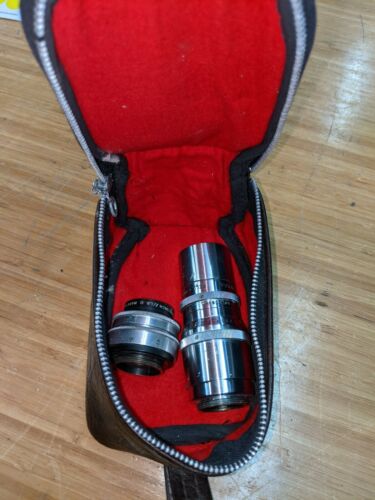-40%
1891 Eastman Kodak lens 200 mm f4 for KODAK NO. 4 and other large format cameras
$ 95.04
- Description
- Size Guide
Description
Antique lens in full working condition. with original breech mount often found on Eastman's Folding KODAK NO. 4 FOLDING KODAK SATCHEL cameras.The lens has some balsam separation around the edge but it shouldn't affect the quality of the photos.
All functions of the shutter speeds and diaphragm have been tested and are good but I never took any photos with this lens as I don't have a breech mount board.
The breech mount can be removed if you drill out a retaining screw but I never had the courage to modify a niece piece of history such as this lens.
--------------------------------------------------------------
Here are more infos about this lens from the website
: antiquephotographica dot info
In 1890, this new model was introduced as "
The Diaphragm Shutter
", which is how it's mostly referred to in factory advertisements.
As a shutter option in many camera ads though, it's mostly referred to as an "Iris Diaphragm" which is the term used by most collectors today. The "diaphragm" name originates from the shutter's leaves which also serve as the aperture by advancing to a preset opening as the shutter is tripped.
The Diaphragm Shutter is easily identified by the two vertically mounted valves on the front of the shutter, one to release the action pneumatically and the other to regulate speed, together with its unique linkage. Speeds are selected by rotating the dial at top front, with the aperture opening being set by rotating the dial at the rear. The lever below the speed dial is used to select either time or instantaneous exposures. The exposure is then made after cocking the lever on top between the speed and aperture dials, using either the manual release or pneumatically with a squeeze bulb attached. Some Diaphragm Shutters are not equipped with a manual release, but you'll find them on about half of those encountered today.
I've referred to this shutter as
The Diaphragm Shutter - Model of 1891
, adding the "Model of 1891" to distinguish it chronologically among Bausch & Lomb's earliest shutters.
The Diaphragm was designed in 1890 (patent filed July 2, 1890) with the earliest examples probably being produced later that year prior to the issuance of Patent No. 444,083 on January 6, 1891.
The shutter's design was shared by Edward Bausch, George Hommel and Andreas Wollensak.
In 1899, Andreas Wollensak, together with his brother John and financier Stephen Rauber, went on to form
Rauber
&
Wollensak.
The most frequently encountered model of Bausch & Lomb's earliest shutters, the Diaphragm is typically found on self-casing cameras by various manufacturers and prominently featured on the Folding Kodak (satchel) series.
One of the least encountered variations is one where the shutter's rear element is integrated with the mounting flange.
When the flange is removed, the rear lens element goes with it.



















